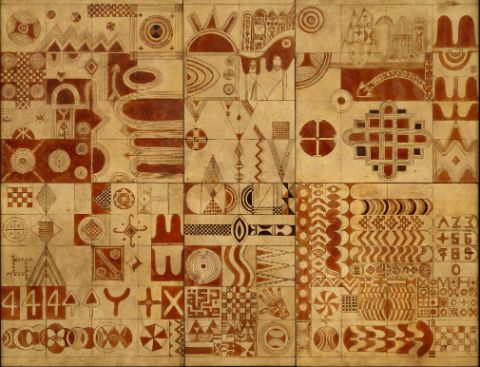Farid Belkahia

© VG Bild-Kunst, Bonn 2023. Photo: Courtesy of The Ramzi and Saeda Dalloul Art Foundation, Beirut
Farid Belkahia is known for his paintings and leather and metal works influenced by traditional Berber culture and Morocco’s architecture. As a modernist artist, who was deeply moved by the independence movements in Africa, he has made decisive contributions to art in the twentieth century through his inclusion of post-colonial perspectives. During the Cold War, he studied painting in Paris and theatre in Prague and when he returned to Morocco in the 1960s, he became director of the Casablanca Ecole des Beaux-Arts and co-founder of the Casablanca School movement. By then Belkahia had consciously distanced himself from the classical tradition of French painting and created a new visual language which placed the symbolism of Moroccan heritage at the centre of his work, while still pointing to his experiences with the minimalist and modernist aesthetic of Eastern and Western Europe. This dialogue is exemplified by Patchwork Culturel in which he employs traditional Moroccan techniques and materials, such as henna and animal hides, instead of using western art staples such as canvas and oil paints. His pictorial language is composed of circles, lines, and geometrical forms, mixed with Tifinagh letters, generating a dynamic which breaks with colonial hierarchies and establishes Belkahia as a critical pioneer in questioning and transgressing the colonial legacy of art.
Work in the exhibition: Patchwork Culturel (1979), painting, pigments on skin mounted on panel, 99.5 × 130 cm. Courtesy of The Ramzi and Saeda Dalloul Art Foundation, Beirut